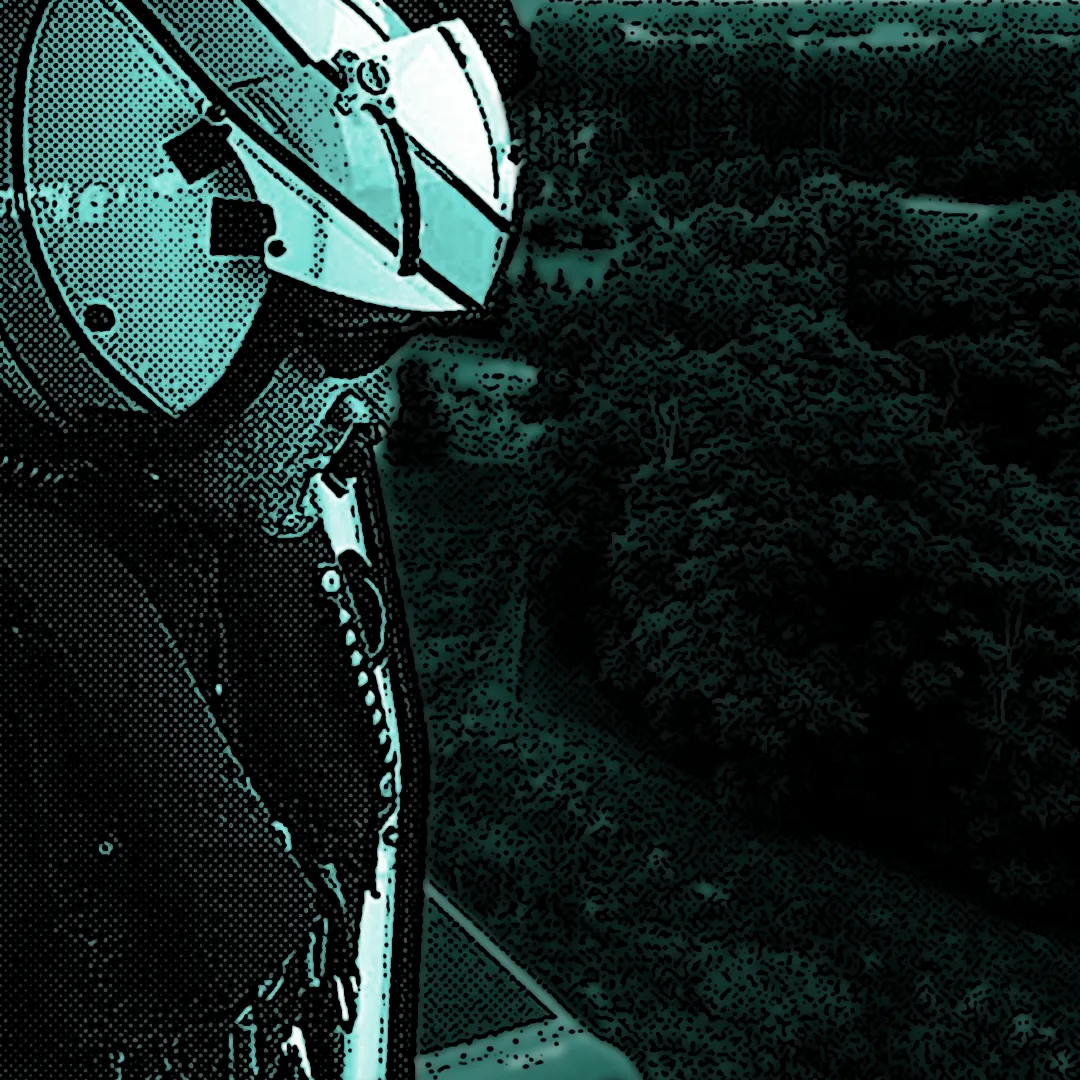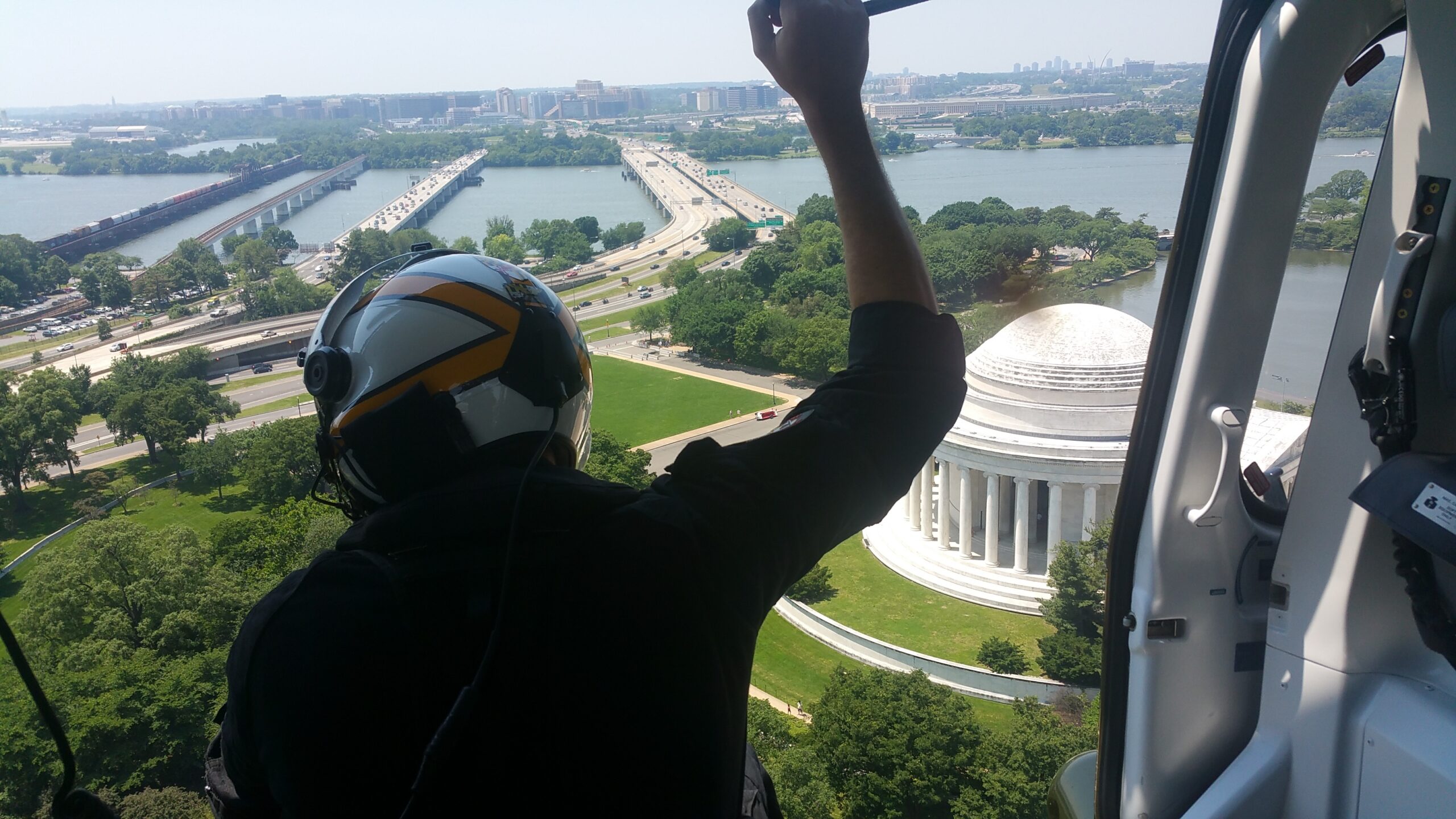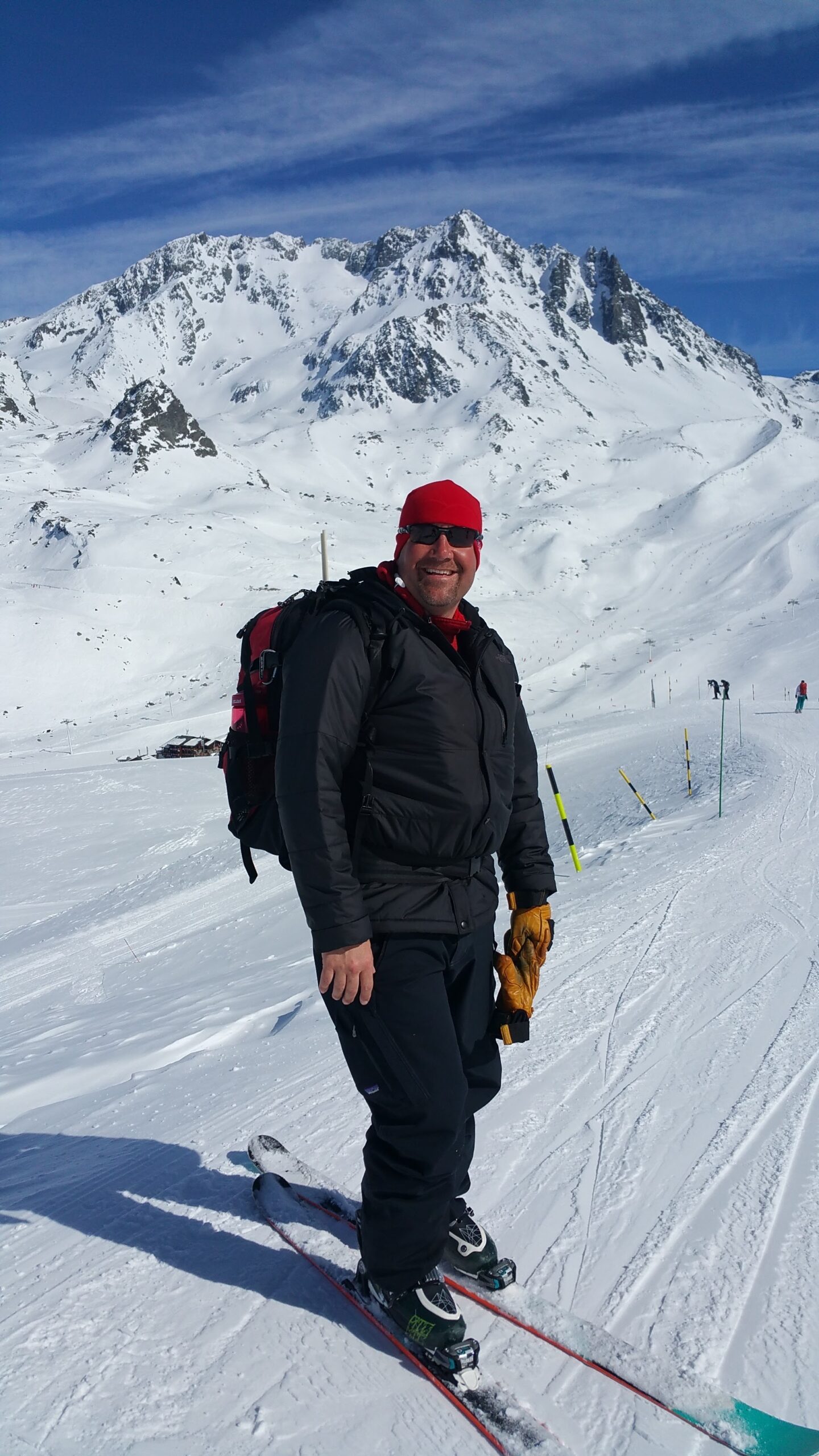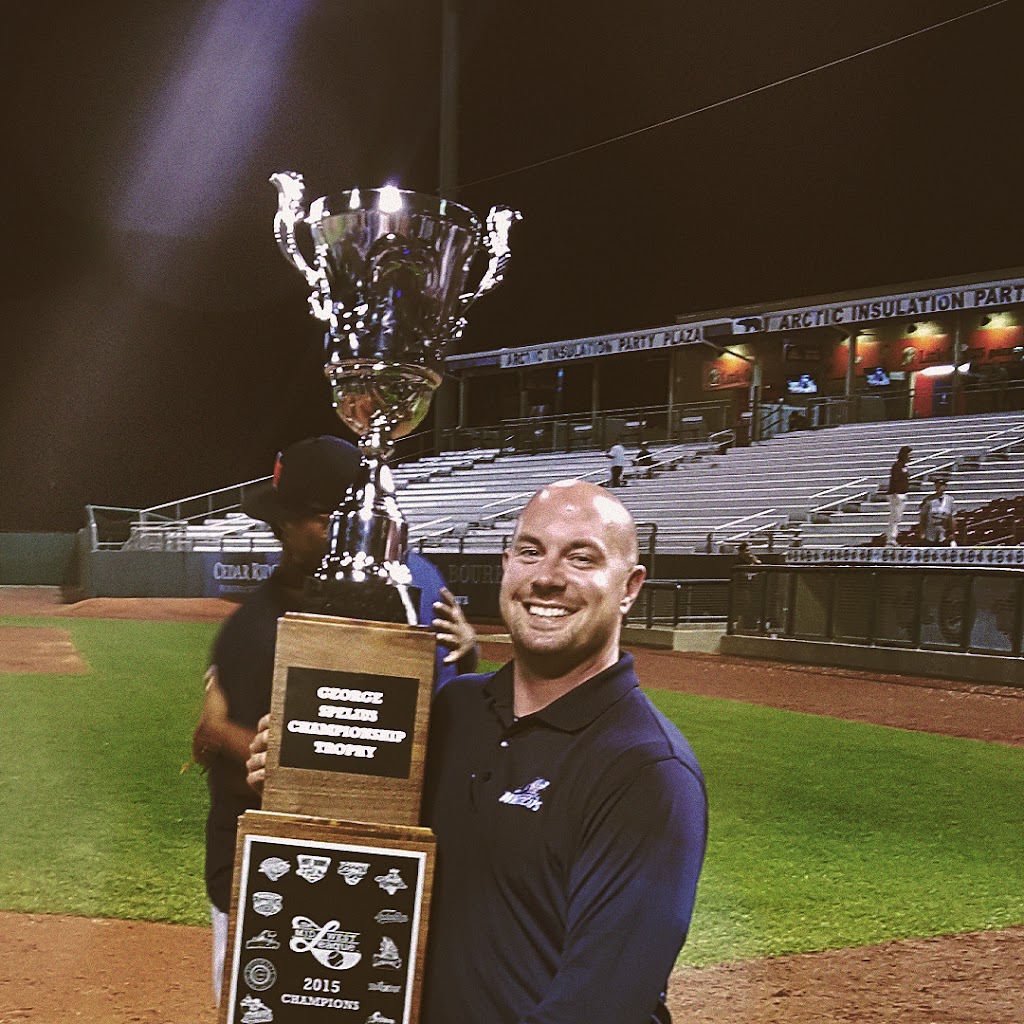AT Spotlight: Ed Strapp, The Most Interesting Athletic Trainer in the World

Ed Strapp May Qualify as the Most Interesting Athletic Trainer in the World
Ed Strapp is not your grandpa’s athletic trainer. Like so many of his colleagues, his role in the Athletic Training world goes beyond the traditional setting or what many think of as a typical role for athletic trainers. His foundational skillset has elevated his career path to EMS, Emergency Scenario Training and lobbying for the profession. Check out this AT Spotlight on Ed Strapp, the most interesting athletic trainer in the world.
You have quite a unique path as an AT. Could you take me through that?
About 10 years ago I switched from full time AT into EMS.
I was working up at Carrabassett Ski Academy in Maine as a solo AT. It was a great position, but I felt it was time to do something different. I worked to become a Paramedic, started EMS full time, and had an opportunity to move down to Maryland and take a job as a flight paramedic with the state police.
Ironically enough, now because of my schedule, I was able to insert myself more into other areas of athletic training. Not so much the patient care aspect, but more the legislative side. Learning more about practice acts and what goes into them, and getting involved with a state association because now I had much more time and availability to attend meetings that I didn’t before.
From there I became the Government Affairs Chairman in MD as well as the District III Representative to the NATA Government Affairs Committee.
What was your main motivation or biggest reason for the initial switch from AT to EMS?
I realized that I would much rather be out on the hill taking care of the acute injury than back in the athletic training room working with the season ending injury. Long term rehabs and all that goes into them is such an important part of what ATs do, it just was not my passion. One of the things I love about where athletic training has progressed to is that it is allowing people to chase their passion more. Regardless of the type of patient you want to work with, there are more and more avenues available now to help you achieve those goals.

That’s one of the great things about what you do at Go4. You are providing all of these opportunities for ATs to branch out and try different settings that I didn’t even know existed. Like Quidditch! I had no idea about Quidditch!
Did you always know that you wanted to be in a helicopter as a flight paramedic?
I was always pretty certain that if I got into EMS full time, the helicopter is where I wanted to be. When you look at the acuity of patients and the types of calls, it is the most challenging to me.
What I didn’t know when I was getting into it in Maryland was how unique it is here. We are run by the state police and it is state law that we are the primary response for every scene medevac in the state. This means that our primary job is scene calls and that is what I want to be doing.
What is a day in your life like?
Day to day we work 12 hour shifts 7-7 and it can be AM or PM. Upon arrival we check all of our medical equipment and the pilots ensure everything is ready with the aircraft. After that we sit down and have a crew brief. Obviously we don’t know what type of calls will come in, but we review what facilities are available, what are not, what the weather looks like, and any aircraft concerns. After that, since we are call based, we wait.
While we are waiting we find ways to fill our time. Whether that is training, keeping up fitness or any other number of things. Once that call comes in, about 80% of what we do is scene medevac. Car crashes, falling off of a ladder, gun shots, assaults etc. are standard. Also, since we are law enforcement as well, we may get launched because there is a bank robbery or armed suspect that we provide aerial surveillance for.
Another big piece that we do is search and rescue with hoist capability. So if you get hurt in the woods, or if you get hurt on a container ship in the Chesapeake Bay, we can lower a rescuer down to aid in care and then hoist you out and fly you to the hospital.
That’s what I love about the job. I don’t know if I’m going to be working a car chase, a hoist, a medevac, every day is so different.
You Also Work with US Ski and Snowboard Right? How did you get involved with them?
I started working with them a little bit when I was up in Maine and have been able to continue that throughout my career.

They have what they call “rotational athletic trainers” that work per diem for them and they have sent me all over the world. Italy, New Zealand, Austria, Germany, Czech Republic, Slovenia, you name it. If they have snow, I have probably been there.
You started a company to help with EAP planning. Could you tell us more about that?
About five or six years ago, Darryl Conway and I joined up to give a presentation at the NATA Convention in Baltimore. We really started to see that the world of athletic training was shifting toward a greater focus on emergency care. For a long time, the focus for ATs was injury recognition, rehab, know when to refer or activate ems, etc. We felt that there was far more that could happen on the field that we as ATs needed to be better prepared for. This was also a great opportunity for me to start to meld my two passions – acute emergency care and sports medicine. From there Darryl and I started a company called Sports Medicine Emergency Management (SMEM) in 2019.
What is SMEM?
We meet with groups of ATs all over the country to train them on better providing emergency care. We look at your emergency action plan and the tasks you need to be proficient at (airway management, CPR, equipment removal, spine boarding) and then focus on REALISTIC, scenario based training.
We go into schools and train the entire staff. Bring in local EMS, coaches, and other administrators that would be part of an emergency response to put it all together.
One of Darryl’s favorite quotes is “training should be your worst day.”
So we want to set you up in the most catastrophic scenario we can create to see how you respond.
It’s so rewarding to be able to work with hundreds of athletic trainers who then go out and implement different aspects of our training to have a real impact on other people’s lives.
What would you say your biggest piece of advice is when it comes to practicing EAPs?
Like other things in sports medicine, it’s NEVER by the book, so it’s important to make things as realistic as possible. How many of us are guilty of practicing our EAP on a nice sunny day in August, with the team physician and EMS already there and all things perfect? I want to challenge people to account for things not going exactly to plan. There’s lighting approaching, there is an accident and your normal EMS crew cannot make it and the back-up crew is 25 minutes away; think outside the box and challenge yourself and your staff.
If you are interested in learning more about SMEM and having them run a training for your staff and other local ATs, check out their information below. They build custom programs based on your needs.
https://sites.google.com/view/emergencysports/home
smematc@gmail.com
Follow on all social channels @emergencysports
Are you an Athletic Trainer?
Join us!
From per diem shifts to full-time opportunities, AT resources, PLI, a free EMR and more, Go4 is the essential AT app. Sign up now!
"*" indicates required fields
Other articles you might like

What’s the deal with Standing Orders?
How do I get standing orders as an athletic trainer? Q: What are standing orders? A: Standing orders, aka medical protocols, establish the scope of practice for an athletic trainer. Under the direction of a physician, they are an overview of the specific skills that the AT is legally able…

AT Spotlight: Thomas Obergefell, Athletic Training from the Dugout
Name: Thomas Obergefell, MS, ATC, LAT Nickname: T.J. Alma…

Middle School / High School / College / Any School EMR – The Importance of Documentation
Go4’s in-app Electronic Medical Record We all know the reasons why it’s important to thoroughly document, but incase you forgot, here they are:…